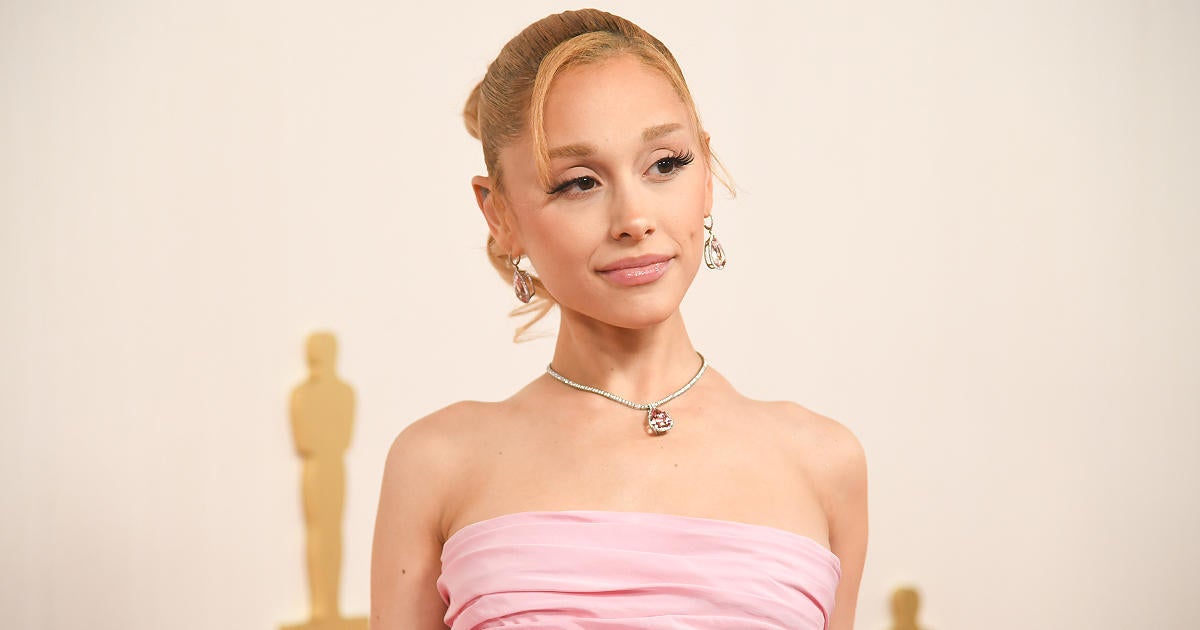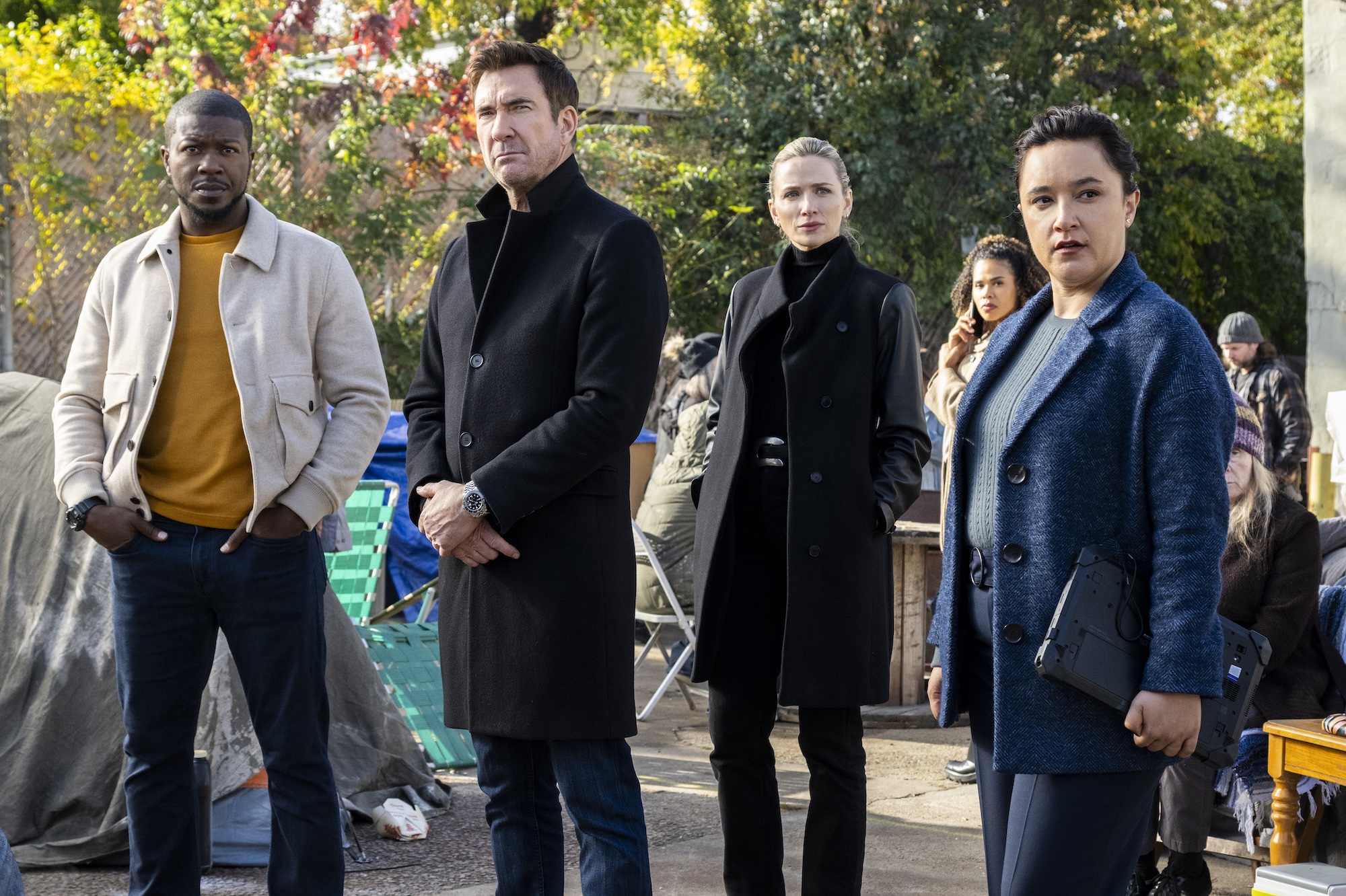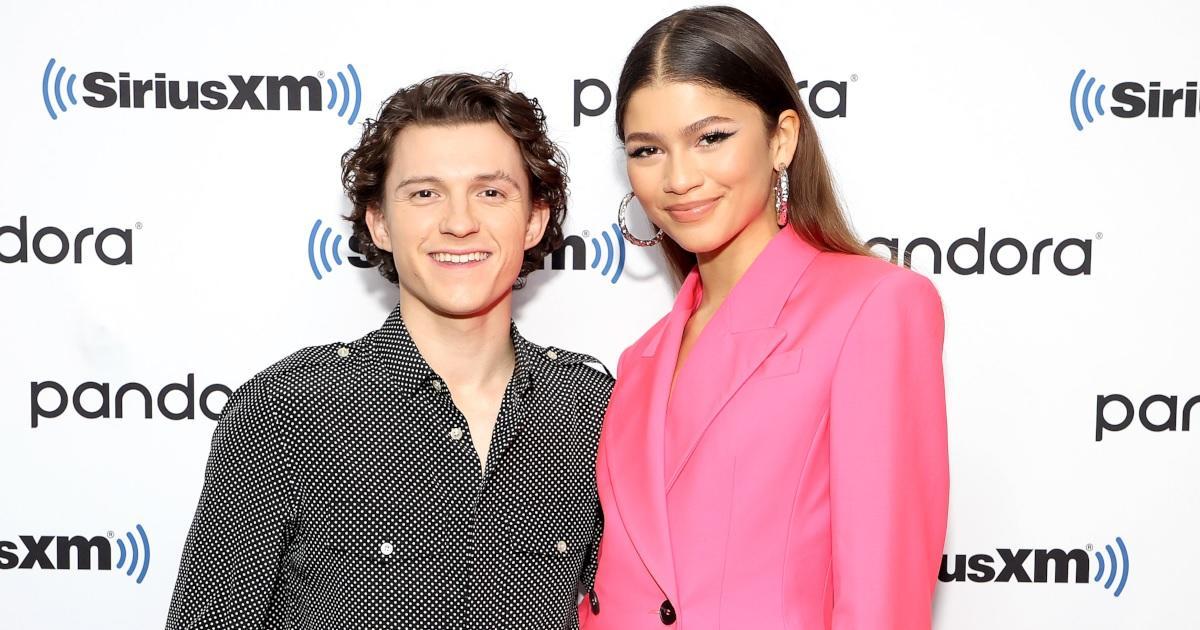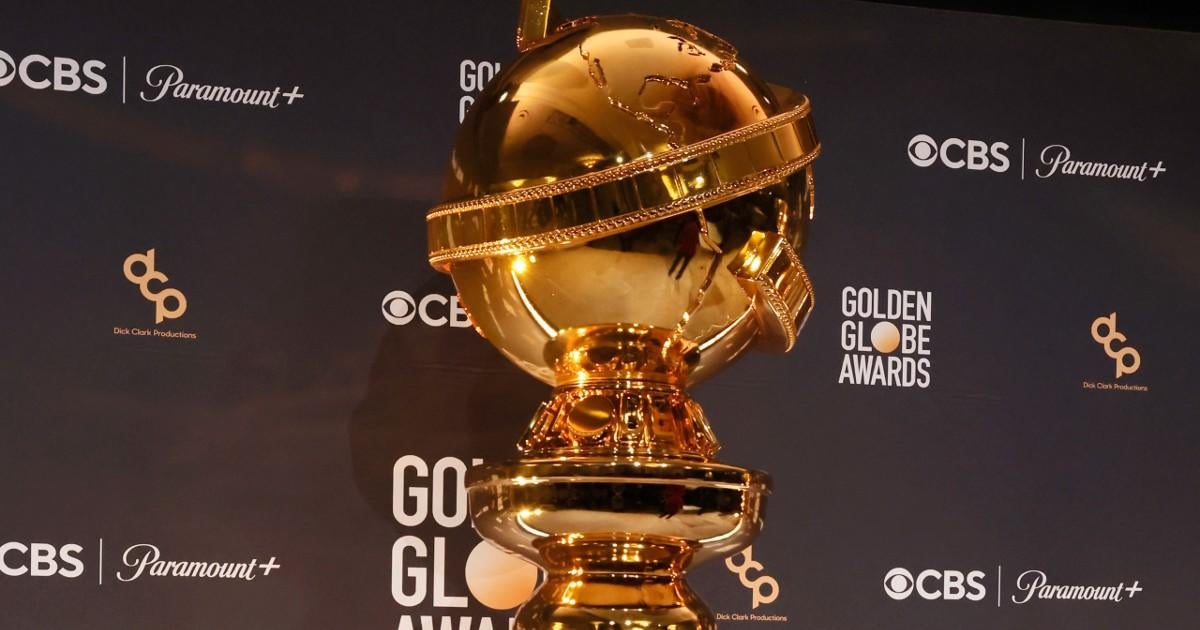10 Takeaways From ‘Starting 5,’ Netflix’s Sweaty, Nosy New NBA Docuseries
:no_upscale()/cdn.vox-cdn.com/uploads/chorus_asset/file/19051699/spoiler_warning_v2.2.jpg)
I don’t mean to brag, but I just might be the perfect viewer for Starting 5, a new Netflix docuseries that follows a handful of NBA players through the 2023-24 season. I say this because I know enough about pro basketball to have been thrilled right off the bat by the list of players featured on the program—LeBron James, Jimmy Butler, Jayson Tatum, Anthony Edwards, and Domantas Sabonis (and I even remember watching that last dude’s dad in action!). Yet I’m also a casual enough hoops fan that it took only one episode of Starting 5 for me to embark on Google side quests like “funniest Jimmy Butler moments” and to delight in the results.
Geographically, the show is also right in my wheelhouse in more ways than one. Not only do I live close-ish enough to Sacramento to go full Leonardo DiCaprio on every drone shot of the city and note, excitedly: “That’s Sacramento!,” but I’ve also spent enough time in Minnesota in the winter to note every cold-weather drone shot of Minneapolis and mutter: “Oof.” And generationally, Starting 5 has me in its grip, too: I’m roughly a contemporary of LeBron, which means I already know all there is to know about him (wrong!); I’m fully in denial about the realities of his age (true!); and I’m now old enough that an ascendant NBA All-Star like Edwards could be my son (whoa). But what might be most fun about watching Starting 5—just total catnip for a journalist like me—is seeing how illuminating it can be to zero in on a subject by widening the lens around them.
It’s always cool to watch Edwards dunk and to hear his mic’d up chirps, but that stuff is only enhanced by watching him bicker with his barber or bask in the protective love of his elder sister. It’s easy to clown on Tatum or LeBron for being corny—until you see the way their kids look at them and realize that really, they’re just Dad to the core. Never again will I watch Sabonis miss a shot without wondering how his wife is taking it. Never will I forget one impossible pregame decision Butler’s agent faced. (And never will I stop wondering about the decision to interview journalist Dave McMenamin under the cloak of night, but I digress.)
There’s plenty of hooping in Starting 5, of course. But the moments that take place in cramped arena hallways or sprawling kitchens or, in one case, a labor and delivery ward (!) are what really light up the show—and distinguish it from so many other projects in the increasingly crowded sports documentary space. “You just learn about everyone’s personality … behind the scenes,” Sabonis told me recently. “In their beds, in their rooms, waking up.” One of Starting 5’s directors, Trishtan Williams, says that “the NBA, they’ve never allowed this magnitude of access.”
Here are 10 takeaways I had after watching all 10 episodes of the series, in all its sweaty, nosy glory.
If you come at this with the King, you can’t miss.
“Stop! We’re on camera!” scolds LeBron’s wife, Savannah James, as he smooches her after a basketball game. “It’s my camera!” he reminds her. In another scene, he calls the crew trailing him “my 5G network.” For decades (plural) now, LeBron has lived a life constantly captured on film. But Starting 5 shows what it looks like when he takes all that attention into his own hands. You can feel LeBron working diligently to get this project right, and that effort is what helps make everything tick, both on a story level—it’s really enjoyable to see a man with full-scale eldest-daughter energy—and in more practical terms.
“Truth be told,” says Starting 5 showrunner Peter Scalettar, “the fact that LeBron was participating in this—who’s going to say no? It made everyone go: It’s good enough for LeBron? I’m in.”
This being LeBron, though, he doesn’t just participate in Starting 5—he goes all in, letting cameras follow him everywhere from his home on Christmas morning to the USC basketball locker room where he introduces his mom to the woman who performed life-saving CPR on his son (and, now, Lakers teammate) Bronny James following a cardiac event in 2023. And all that’s just in Episode 4 alone. “The most difficult part of the show,” says director Susan Ansman, who was tasked with filming LeBron, “is keeping up with that man—because he is up at like 4 a.m. and he works until probably at least 1 a.m.” Just as that work has paid off in his career, it lays a strong foundation for Starting 5.
:no_upscale()/cdn.vox-cdn.com/uploads/chorus_asset/file/25666345/2155362971.jpg)
Photo by Stephen Maturen/Getty Images
The circle of life moves us all.
“Do you feel like you still have a little maturing to do as an NBA player?” Williams asks Edwards from behind the camera in Episode 2, and Edwards answers her question with one of his own. “What do you mean when you say maturing?” he asks, stroking his chin, his tone half-proud, half-flummoxed. His impish grin tells us all we need to know: this is a guy who is just getting going, which means that all of this—the TV show; the rest of his ascendant career—sure is going to be fun. “Anthony is very special,” Williams tells me. “I say that in the greatest way—his personality, his smile, he’s charismatic, he’s a lot of fun, and he literally says whatever comes to his mind.”
All of this is already a joy to watch, but never more so than when it’s juxtaposed with footage of a guy on the other side of the NBA mountain—LeBron. “We start the season with LeBron going into his 21st season,” says Scalettar, “and then we show up at Anthony Edwards’s house and introduce him: I’m Anthony Edwards. I’m 22 years old. You go, oh, wait—you don’t know a world without LeBron as the sort of gold standard.”
In the show, LeBron spends hours devising oddly elaborate Halloween costumes and being treated like a nerd by his teenage kids; Edwards has to be pried away from his video games. Now, LeBron was always an old soul, even at 22. But these days he speaks and moves with the extra world-weariness earned over two-decades-plus in the league. Edwards, by contrast, shows an eternal-youth swagger that’s still uneroded by the events we know lie in wait for him, like Minnesota’s so-close-yet-so-far playoff exit or the abrupt and unexpected recent trade of his pal and teammate, Karl-Anthony Towns.
All of this makes it particularly noteworthy when, in Episode 7, Edwards’s girlfriend Shannon gives birth to their daughter—and allows the TV cameras into the delivery room. It’s nice to meet the new baby, but if I’m being honest, there’s no sight quite so beautiful as an earlier Starting 5 shot of Edwards outside the hospital, struggling to pull up his damn pants so he can scurry inside, a picture worth a thousand what-do-you-mean-when-you-say-maturings indeed.
I owe Jimmy Butler an apology: I was only familiar with his game.
As I mentioned earlier, I’m a pretty primo target for a show like this because, while I definitely don’t pretend to know too much about any player who isn’t on the Knicks, it turns out I knew even less than I thought! Take Jimmy Butler, for example. Here I was, thinking that I was pretty up to date on the guy’s whole deal—disgruntled star on the Bulls; successful stranger-in-the-night with the Wolves and then the Sixers; elite defender with a clutch midrange jumper, and now the kind of player with the Miami Heat that I hate seeing my team go up against. Floating vaguely in my mind amid all this basketball stuff was something about a funny emo haircut at a press conference, I guess?
Having finished Starting 5, though, I’ve now learned so much more. The cappuccino obsession and the in-home barista! The SoFla-coded love for all things soccer and racket sports! The musical jam seshes on his back patio, and the his-and-hers Nuggets as Christmas presents (relatable parenting content), and the way Butler explains that “in my home, we don’t do basketball,” like some kind of work/life-balance king! This is a guy who didn’t just mess with his lewk for media day—he committed so thoroughly to the bit that he wound up in a Fall Out Boy music video!
It’s enough to make me want to despair a little bit over how much else I’ve missed out on for all these years. When I mentioned this to Sabonis, he chuckled and suggested I follow Butler on Instagram, as he does: “There might be more on his Instagram than there is on the show,” he said. “I’m a big fan, so it’s cool that you get to see it now.”
And as it turns out, I didn’t even know the half of it when it comes to Butler as a player, either. “Jimmy has been an underdog his whole life,” Starting 5 producer Sami Khan tells me. “Like, the idea of an NBA career didn’t dawn on him until well into his Marquette career. He was like, counted out constantly, you know? This guy from Tomball, Texas—not a basketball hot spot by any means—goes to Marquette as kind of an afterthought. Drafted by the Bulls as kind of an afterthought. And time and time again he proved people wrong.” It should bring me no pleasure to like a Miami Heat player this much, and yet, here we are.
:no_upscale()/cdn.vox-cdn.com/uploads/chorus_asset/file/25666347/1247313663.jpg)
Photo by Nathaniel S. Butler/NBAE via Getty Images
Ball is pain.
I don’t usually enjoy experiencing secondhand discomfort while I’m relaxing on the sofa, (yeah, yeah, insert Knicks joke here) but I’ll make an exception for Starting 5. That’s because one of its greatest strengths is making the audience experience the visceral discomfort that comes hand-in-hand with being (a) a professional athlete who’s trying to play 82 and ideally 98 games in a season, and (b) impossibly, painfully tall. It isn’t just Old Head LeBron getting hours upon hours of work done on his body, although I was genuinely fascinated to see the scope of what a game day looks like for him. It’s also Ant, the young pup, saying that he kinda hates dunking because that shit hurts, or limping gingerly down his stairs, sporting a gait that’s far past his years. It’s the difference between the heights Butler can reach in his mind, and the reality of getting grounded, at the worst time of the year, by his own body.
But it isn’t just the injuries, it’s also the spaces—so, so many incongruous spaces that aren’t designed for men like these. “All of these tiny spaces for these big, living giants!” exclaims Williams. “It’s like, you’re in these tunnels. You’re in these workout spaces where it’s not glamorous. You’re in a hallway where it’s dark and it looks like a jail cell sometimes.”
When I think of a guy like Tatum moving through the world, I’m likely to imagine confident strides, maybe some regal waves—“the glitz and the glam,” as Williams puts it, the guy we see under the spotlight. But here’s what Tatum actually looks like in Starting 5: he leaves a hotel room, far away from his young son on Christmas, and hobbles stiffly down one more long hallway in a lifetime filled with them, pausing to duck awkwardly beneath an exit sign that most people would never have even noticed.
Or when I picture LeBron getting his body tuned up for a game, it’s easy to forget that half the time that’s taking place in an extremely dated, falsely-ornate ballroom/conference hall in a replacement-level Westin hotel. Ansman laughs at a memory of filming LeBron in one particularly cramped and crowded thoroughfare: “LeBron’s in this tiny corridor,” she recalled, “with, you know, caterers walking by to get through it.” Sometimes being the biggest name in basketball opens any door you can imagine. Other times it just makes the space you’re trapped in feel really, really tiny.
Sometimes the All-Stars align.
Episode 6 brings viewers to the 2024 All-Star Game—LeBron’s 20th!—that event where reputations are rewarded and egos are wrangled and the resulting product can range from “incoherent mess” to “glorious union of singular talents.” And similarly, the creative process behind Starting 5 involved a number of stakeholders so high-profile that you wonder how they managed to pass the ball around.
Executive producers on the show include, but are not limited to, NFL Hall of Famer Peyton Manning, sportsbiz maestros Maverick Carter and Jamie Horowitz, and the Obamas. In addition to all the well-oiled studios involved—from Omaha Productions to Higher Ground to Springhill—there was also Netflix to contend with, and all the little galaxies that surround each individual player to manage, and THIS LEAGUE, a.k.a. the highly image-conscious NBA.
To Scalettar, this setup worked for much the same reason that any effective All-Star team might: everyone let everyone else’s best stuff shine. “Everyone plays their position, and it’s collaborative, and we’re sort of greater than the sum of our individual parts,” he says. Springhill, LeBron’s production company, brought its ongoing experience with athlete-driven productions. Higher Ground, the Obamas’ baby, excelled in “meaningful storytelling and emotionally driven stuff,” Scalettar tells me. “You know, grounding us and reminding us that it’s not all sports all the time.” And Omaha’s two highly successful Netflix shows, Quarterback and Receiver, were general proofs of concept—not just for the network or league brass, but for the players themselves.
Other shows like Formula 1: Drive to Survive might have been earlier to the bustling trend of sports documentaries; Sabonis tells me that he’d watched that program as well as Netflix’s golf and tennis series, Full Swing and Break Point. But multiple people I spoke with singled out Quarterback as being particularly influential in the making of Starting 5. Ansman says that the depth and length of access granted to Quarterback by tippy-top NFL players like Patrick Mahomes “was very eye-opening, and I think opened the door” for similar shows. “Guys watched it and they’re like, you know, we can let people in, and it’s OK to let people in,” she says.
:no_upscale()/cdn.vox-cdn.com/uploads/chorus_asset/file/25666348/2157748092.jpg)
Photo by Ethan Miller/Getty Images
The best category will always be “Best Supporting.”
One of my few small Starting 5 gripes is that I would have enjoyed spending more meaningful time with some of the five featured athletes’ teammates. But I understand it probably would have been both a logistical and strategic challenge: “Everybody knew what was going to make Starting 5 special,” Khan says. “And it was the guys, the characters themselves—and their families.” Despite all the star power in Starting 5, sometimes the show sparkles most when the person on-screen isn’t a professional athlete.
There’s nothing funnier, for example, than watching someone who is worth millions of dollars and adored by millions of fans, get absolutely ripped to shreds and/or read to filth by the tiniest souls in their midst. (Jimmy Butler’s daughter, I salute you; long may you reign.) There’s nothing more soulful than seeing the way Edwards’s sister Antoinette keeps her baby bro under her wing when he needs it, but also knows when to step aside to let him soar. There’s nothing sweeter than dear Deuce Tatum showing off the toys in his bedroom—unless it’s getting a glimpse of the identical bowl cuts sported by both Sabonis-as-a-boy and now by Tiger, his young son.
On the flip side, there is nothing worse than that parental panic in LeBron’s voice when he talks about his son’s life-threatening medical event. And nothing more melancholy than the moment when, minutes before a game, Butler learns from his agent that his father has received a terminal medical diagnosis. Each of these scenes is a reminder for us fans that for all of our number-crunching, narrative-weaving obsession over athletes and teams, there will always be a whole world of things that we can’t know.
Williams tells me that she has a tried-and-true production trick to help find the people who do know things. “My little secret sauce is to deal with the women first, and love them,” she says. “We fall in love like best friends. They give you the access to the house, give access to the schedule. You get access to the husband, the boyfriend, whatever.” In Starting 5, though, it doesn’t end there. Throughout the series, there are a number of women—sisters, mothers, daughters, girlfriends, wives—who are not only part of the narrative, but central to it.
Such as Antoinette, or Sabonis’s wife Shashana—a former Lakers dancer who I would absolutely never want to cross—or Savannah James. Sitting down with Savannah was “one of the most amazing interviews that I’ve ever been a part of, because she was so honest and so just authentic and unapologetic, and it was just beautiful to watch,” Ansman says. “I think people are not going to be ready for that.” (Don’t sleep on LeBron’s daughter, Zhuri, either: though she be but little, she is fierce.)
Joe Mazzulla and Shashana Sabonis really ought to team up.
I need to see a crossover episode or a coaching collab between these two individuals who live their lives with their eyes on the prize and don’t care who knows it. One of the great pleasures of the show comes in Episode 5, when a producer asks Boston Celtics head coach Joe Mazzulla about all the criticism that Tatum has to deal with and Mazzulla interrupts—“Gets to deal with. He gets to deal with it.” So much contained in only 10 words!
“You’re a little bit intimidated by Joe Mazzulla,” Khan says of filming with the Boston coach, “because he’s an MMA fighter and you’re like, Is this guy going to just put me in a chokehold? But I was just surprised by how funny he was. He’s actually really charming.” Khan told me the coach gave him more than twice the time he requested for his interview, and oh yeah, also kind of blew his mind. “It’s like, dude—just, your mindset is insane,” Khan remembers thinking. “You’re like a—I don’t know, some sort of illusionist. Where you think about the world, and you can kind of sneak out of a situation and reframe it in a way that’s super powerful.”
And then there’s Shashana Sabonis, who appears to coach up her husband more sternly than even his Eastern European father does, and who seems more affronted than anyone when he doesn’t make the All-Star lineup. (She’s got a point there: The big guy led the league this season with 77 double-doubles.) When I asked Sabonis if his wife has given him any pointers going into this season, he said: “Basically knowing how to actually just go out there and kill everyone in front of you. Don’t take it easy, go hard. You know, she’s—she’s the one that pushes me the most.” And Williams gushed about Shashana’s involvement in the process. “She complements Domantas so, so well,” she says. “She was just a dream and a pleasure to work with. Every single day she’s like—I called her my co-producer at times, because she’s like—‘This popped up!’ And ‘I think you will like this!’”
:no_upscale()/cdn.vox-cdn.com/uploads/chorus_asset/file/25666349/2158043966.jpg)
Photo by Adam Glanzman/Getty Images
The fix was in!
I kid, I kid, but it is prettaaaaay convenient the way the season worked out so perfectly for the producers of this program, eh?! “Icing on the gravy,” is how a smiling Scalettar describes the piece de resistance of Starting 5: Tatum and the Boston Celtics’ run to an NBA title.
For all those May-December passing-the-torch juxtapositions between Anthony Edwards and LeBron James, in some ways the show’s more fascinating comparison is the one between Edwards and Tatum, two players of the same generation. “We’re sitting here watching Jayson Tatum and the Celtics have a epic season, and then watching Anthony Edwards do things that no one has ever seen before,” remembers Scalettar of how it felt to be filming during the postseason, “and all of a sudden we’re going: These two of may actually be on a collision course in the Finals!”
While that didn’t ultimately happen—Edwards and the Wolves lost to the Mavericks in the Western Conference finals—Starting 5 makes two things clear: One, that Edwards and Tatum are on a similar trajectory that arcs toward becoming next-gen faces of the NBA, and two, that a player’s outward-facing personality doesn’t always capture what lies within. “You ask Anthony Edwards, he’s gonna tell you straight up he’s the best player,” says Renee Montgomery, a basketball analyst and former WNBA player, in Episode 2. “You ask Jayson Tatum? He’s gonna think it, he’s gonna know it … he miiiight not say it.” In a show that relishes in the goofiness of Butler and the gravitas of LeBron and the bombast of Edwards, Tatum cuts a much gentler figure, talking about himself so quietly at times—even when what he’s saying is that he’d cut off one of his fingers to win a title!!—that I found myself wishing that I could travel back in time a year to reassure the guy that everything would be OK.
Clearly, though, that wasn’t necessary. In the later episodes, Tatum’s play speaks plenty loudly for itself. In Episode 10, as the Celtics barrel their way to a title, Tatum is an unstoppable force, dishing to Jaylen Brown and stripping the ball from Luka Doncic and finishing with 31 points and 11 rebounds in Game 5 to clinch the championship. Tatum weeps and hoists his kiddo and yells, in the direction of his mother, “What are they gonna say now?!” And his mother yells it right back.
With great power comes great vulnerability.
In Episode 6, after LeBron becomes the first player in NBA history to score 40,000 points, he tries to put into words the way he feels about his wife. What results is an extraordinary monologue in which LeBron describes what it’s like to seek and find rare air—and how it feels to return to the real world from time to time.
“You get lost in your own journey,” he says, “because you’re trying to like, push the limit, push the throttle, see how far you can go. Oh shit, that’s the sky? What’s beyond that?” He is talking faster now, gazing and gesturing toward the heavens, explaining that Savannah has always held down the fort at home while urging him to go, go, go. “There’s no ceiling,” he continues. “And while you’re on that trajectory, at times, you’re looking down, like: Oh, shit. My family’s down there.” LeBron tilts his head earthward, in the manner of Dr. Manhattan observing the human race from afar. “You’re trying to say thank you,” he insists, “but you’re like, so fucking high at that point that she don’t even hear you.”
This is all wild stuff to be saying out loud—yet it also feels like one of the most honest things I’ve ever heard an athlete say. “He’s done a thousand interviews,” Ansman says, “And that was my goal, from day one: to not make this a-thousand-and-one.”
Jimmy Butler’s story line offers up another example of vulnerability, when we watch his agent, Bernie Lee, struggle with whether to deliver bad news about Jimmy’s ailing father’s prognosis before a game or afterward. It’s a stark reminder that many of the cardinal decisions about Butler’s life—where he plays, when he plays, what he’s told—are quite simply out of his hands.
What was in Butler’s hands was the choice to share his struggles with Starting 5 audiences, right alongside his successes. “It’s hard enough when someone close to you dies,” says Khan. “But then to have all of these other layers on top of it? Of fame, of expectations, of having to deal with fan culture? You can’t possibly understand unless you’re going through that. I just thank Jimmy, and I have a profound appreciation for that gift he gave viewers: Sharing, like, the most intimate moments of his life.”
The access is the juice.
A big reason Starting 5 really sings is that its creators and its subjects don’t merely understand the assignment—they actually seem to enjoy doing the hard work required of it. This isn’t always the case with true-sports content: Certain seasons of Hard Knocks, for example, have the feel of everyone being televised against their will, while other shows, like the tennis-centered Break Point, flounder because they just don’t feel behind-the-scenes enough. (It remains to be seen whether an upcoming Netflix project following Carlos Alcaraz and titled Alcaraz will be a more compelling foray into tennis.)
Sometimes, documentaries are hindered or stunted by the buy-in of their subjects. (I felt this way about last year’s Johnny Manziel doc, titled Untold: Johnny Football.) But in the case of Starting 5, the five featured starters can control only so much of the story. It’s up to the ball and the hoop and the laws of luck and physics to determine the rest.
Tatum’s championship this June was the culmination of years of planning and practice and plane rides (and the requisite je ne se quoi from the basketball gods), and he wasn’t the only person involved in Starting 5 to reap the rewards of hard work and hard-won expertise.
“I hadn’t been home even nine hours,” says Williams, one of the show’s directors, about the March day where she got a 4 a.m. phone call that Anthony Edwards’s girlfriend, Shannon, was in the early stages of labor. Somehow, Williams scrambled and made a 5:15 a.m. flight from L.A. to Minnesota that same morning. “I literally land, I take my suitcase from the airport to the hospital, and I walk in and set my camera up,” she tells me. Edwards had a game that night, so Williams went to the arena next and waited. And then: “I see his best friend stand up. I see his manager stand up. Everybody pops up at the same time: it’s happening,” Williams says.
In the show, we see Edwards leave midway through his game; we sit right there with him in the car. And not only do we get to meet the teensy baby, we witness the blessed moment that Edwards accidentally eyeballs the placenta and promptly bugs out. “Bruh, they got some shit in a cup that look like her insides,” is how Edwards sums up what he’s seen. “It look like … you seen Men in Black?” Like I said, I think I might be the perfect viewer for this program.
“That entire day was crazy,” Williams says proudly. “It was so hard. It was so worth it. It was like, the access you want.” Personally, I couldn’t agree more.







